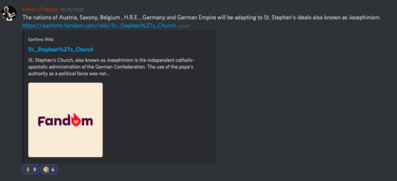St. Stephen's Church: Difference between revisions
>Bingus Chungusian XII No edit summary |
>Bingus Chungusian XII No edit summary |
||
| Line 1: | Line 1: | ||
{{Religion_Template_v2.1|founded_by=Archbishop Pastelant, Prince-Bishop Erwinning, Prince-Bishop Colt, Prince-Bishop Sepl.|date_of_creation=around 2021, formalised 15th Jan 2022|deities=God (Father, Son and Holy Spirit)|scripture=Holy Bible, Book of People's Worship (BPW)|holy_people=Saints|holy_cities=Jerusalem, Nazareth, Bethlehem|practicing_nations=Austria, Saxony, Belgium, Germany, German Empire, H.R.E.|image1=[[File:Stephenscross.png|200px]]}} | {{Religion_Template_v2.1|founded_by=Archbishop Pastelant, Prince-Bishop Erwinning, Prince-Bishop Colt, Prince-Bishop Sepl.|date_of_creation=around 2021, formalised 15th Jan 2022|deities=God (Father, Son and Holy Spirit)|scripture=Holy Bible, Book of People's Worship (BPW)|holy_people=Saints|holy_cities=Jerusalem, Nazareth, Bethlehem|practicing_nations=Austria, Saxony, Belgium, Germany, German Empire, H.R.E.|image1=[[File:Stephenscross.png|200px]]}} | ||
'''St. Stephen's Church''', also known as '''Josephinism''' is the independent catholic-apostolic administration of the German Confederation. The use of the pope's authority as a political force was not welcomed by | '''St. Stephen's Church''', also known as '''Josephinism''' is the independent catholic-apostolic administration of the German Confederation. The use of the pope's authority as a political force was not welcomed by the josephists. Examples of this can be shown as the crusades launched against the enemies of the nation in which the pope is located. In addition, the conflicts between Austria with the Vatican, and the religious vacuum that emerged in Germany, and the need to seperate themselves from the pope and the political actions of Francia against the subject state of Saxony fueled the formation of this religion. Its roots can be traced back to 2021. | ||
== Early Reforms and Catalysts == | == Early Reforms and Catalysts == | ||
Latest revision as of 17:04, 15 March 2022
Template:Religion Template v2.1
St. Stephen's Church, also known as Josephinism is the independent catholic-apostolic administration of the German Confederation. The use of the pope's authority as a political force was not welcomed by the josephists. Examples of this can be shown as the crusades launched against the enemies of the nation in which the pope is located. In addition, the conflicts between Austria with the Vatican, and the religious vacuum that emerged in Germany, and the need to seperate themselves from the pope and the political actions of Francia against the subject state of Saxony fueled the formation of this religion. Its roots can be traced back to 2021.
Early Reforms and Catalysts
After Old Germany's split, Catholic influence over the land was lost and a religious vacuum was created. Though technically the Austrian royal family considered themselves to be loosely catholic, no practices of mass or religious administration took place across the land. Most of it was considered secular.
And early reformer known as Toefte made some early attempts to change the liturgy and add more tolerance, but this was stalled. He was later ordained a dean due to his efforts. It is generally thought he inspired some of the basis for early secular-josephinist philosophy, which arose with the Turkish influx of players which required a decent amount of tolerance in Christian lands.
The German Confederation was formed without any administration from the pope, who was in increasingly political matters: such as judging the legitimacy of claims, backing wars or even starting a crusade against Apostolic Christians. This caused aggravation due to the fact the pope said he'd tolerate other branches of Christianity.
Formalisation of the Church
Since the conflicts between Austrian leaders and the Vatican, Kaiser Erwinning wanted to seperate the state from pope's influence and had the idea of creating a new religion. Erwinning put ToefteHD in charge. Due to Toefte being busy he couldn't work on the religion and the formation stalled. A year later Erwinning gathered Pastelant, ColtMagnum and Sepl3333 to finalize the new religion at 09/01 /2022. After an ultimatum and eventual declaration of war against Saxony, the split between Austria and the Roman Catholic Church grew significantly. Francia, the most pious state outside the pope's own holdings, has just attacked a member state.
Technically, Austria was not in the holy see's administration (though there were Roman-Catholic clergy) far before the St. Stephen's establishment- but Erwinning and other mayors, including a member of the Roman-Catholic Clergy, decided that a formalised announcement must take place to dissolve any affiliation with the Francians and to demote the pope due to his contradictions and supposed misconduct. This finally happened on the 15th of January, 2022 on the German Confederation discord server.
Early History and Growth
The church grew unopposed, and the population unanimously went about their lives like nothing happened. The faith spread to Norfolk with the creation of the Diocese of East-Anglia after Ostend grew to Britain during the English Civil War.
Beliefs
The members consider the church to be part of the apostolic succession, and use the Nicene Creed. However, they do not recognise the pope due to his obvious ties with Francia and past crusades against fellow Christians- even though he says he accepts all branches. Instead, Jesus Christ is the spiritual head of the church and ultimate authority: with the Archbishop of Vienna and the Prince-Bishop of Flanders as the leading administrators, with very autonomous bishops for different regions (Archbishop and Prince-Bishop simply advise, allocate funds to the bishops and moderate liturgical practice). Under their authority are the reverend rectors and vicars, who operate parishes and have a certain amount of autonomy themselves. The bishops gather in a council to vote on certain matters and great liturgical or management decisions, and the vicars have their own councils under their rectorship. An important feature is the free investiture away from the pope, where the clergy are chosen by a high-ranking authority e.g. the Kaiser, with advice and recommendations from the clergy.
The church considers itself to be catholic, but they argue that the current state was never involved with Roman Catholic administration and there is no reformation, but simply a formality to distinguish it. However, some reforms have taken place, with only three sacraments: Baptism, Eucharist and Matrimony. For it is EMC and there is only so much time for the rest to take place, especially for the odd few who have lives. The Solemn Mass (Kyrie, Gloria, Sanctus etc) is preserved, but to be undertaken in the common language of the area. There are small changes in the rites for services other than mass -addition of congregational confession, prayers for certain places in the world or based on holy days, responses and collects- but nothing that both testaments prohibit, or collects that favour certain political or social organisations or persons in government. There is usually either Eucharist or Morning Prayer in the morning, or Evening Prayer or Vespers in the evening. Congregation are expected to also have quiet moments of prayer at their own accord, and live frugal lives. However, Stephenists are not forced to take part in services outside occasional Eucharist (though it's nice if they do). In EMC, these other forms of worship do not take part much as people are up to something else.
The hymnal and different rites for certain saint or holy days, as well as the translated Holy Bible, are all put into the Book of People's Worship: from which all can comprehend and have passion in their worship: for all need to hear the word, not just the clergy. Certain grand ornamentation is considered a kind of idolatry, and leads the interiors of most Stephanic churches as rather bare compared to their Roman Catholic counterparts. However, this isn't strictly enforced, and the amount of ornamentation and use of icons differ from diocese to diocese based on the preference of the bishops, deans, rectors or vicars. Incense is rejected (mostly because making a similar system in Minecraft is a difficult process). You're allowed to use whatever skin you want in church as long as it is not inappropriate. Unfortunately, there are no gift shops, for commerce should not take place is God's house. This also scorns business and discussion of politics, and all within it are spiritually equal and at the mercy of a judging God. Priests lead the worship, but are still sinners and also require confession and communion. Unlike Roman Catholics, they can have their own families and forms of small business to sustain themselves. But any grievous misconduct, or repeated irresponsibility will have consequences appointed by the council.
In the German Confederation, the administration does not taint political elections or manipulate the doings of the member states. It is simply used as the main form of worship for the nobility or any citizen willing to convert. There shall be no forced conversion, and people are allowed to believe in what they want. Unlike the pope, who they see has broken the promise of tolerating other faiths with his crusade against the Frankish apostolics, they fervently believe in letting towns have their own faiths: whether Christian or not. No matter their faith, there is no favouritism in election and/or rank. It is simply that St. Stephen's Church is the kaiser's and the surrounding family's choice of worship, and that it is to separate from the pope.
Names and Titles
The namesake is derived from the name of the Archbishop's seat in Vienna: the Stefansdom. It is also supposed to represent Stephen's steadfastness against the stoning from more established religious leaders, such martyrdom for such a young faith is similar to how other branches of Christianity has been ploughed down by the Catholic Church and the zealous Francians: including the St Stephen's Church. Also, he is the patron saint of bricklayers and stonemasons, and is a figure for all the builders in Austria- and symbolises stronger infrastructure and support of the crafts. His day on the 26th of December is highly celebrated, and has building festivals in his name. However, the church is also commonly known as Josephinism by the clergy- after tolerance and cultural reforms made by past Austrian rulers. The ultimate name is disputed, and the council has decided not to dwell on the matter further to avoid a fight breaking out. Josephinism is also usually used to label the tolerance philosophy outside the church, as well as diversity within the empire. The symbol for the church is St Stephen's Cross, or his palm frond.
The clergy's titles are usually Reverend for vicars, deacons and rectors, and Very. Rvd. for Deans, Bishops and Prince-Bishops. The archbishop is chill, just call him "Archie" or "Mr. Vicar" or "Bishop" or "Reverend" or whatever. This is a bloody Minecraft server, no point to get angry over someone giving you the wrong title please we just love Jesus.
Current Clergy
- H.E The Archbishop of Vienna, Pastelant
- The Vry. Rvd. Prince-Bishop of Lorraine, Erwinning
- The Vry. Rvd. Prince-Bishop of Flanders, Colt Magnum
- The Vry. Rvd. Prince-Bishop of Bohemia, Sepl
- The Vry. Rvd. Bishop of Slovakia, Saranova32
- The Vry. Rvd. Bishop of Pomeralia, Mlecz
- The Vry. Rvd. Bishop of Berlin-Brandenburg, Superakif
- The Vry. Rvd. Bishop of Cologne, Andrew_Cheese
- The Vry. Rvd. Dean of Klagenfurt and Rvd. Rector of Carinthia, ToefteHD
- The Vry. Rvd. Dean of St. Andrew's and Rector of Zordeaux, Zeontes
List of Josephinist churches
| Image | Name
English, German |
Location |
|---|---|---|
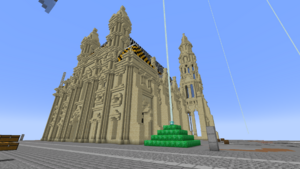
|
St. Stephen's Cathedral,
Stephansdom |
Vienna, Austria, 2480 -8909 |
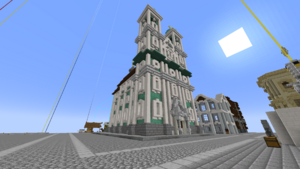
|
Old cathedral, Alter Dom; Church of Ignatius, Ignatiuskirche | Vienna, Austria, 2497 -9105 |
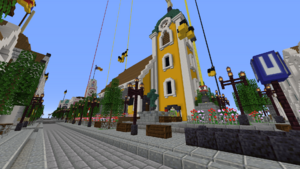
|
Velden Church, Veldner Kirche | Prague, Austria, 2433 -9259 |
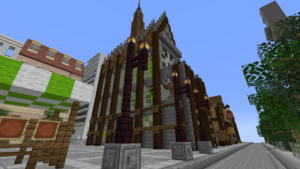
|
Berlin Cathedral, Berliner Dom | Berlin, Austria, 2457 -9823 |
| Ulm Cathedral, Ulmer Münster | Ulm, H.R.E., 1569 -9099 |
